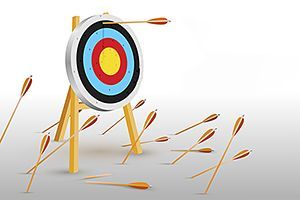Whether you accept it, avoid it or live somewhere in between, insurance coverage has become a defining issue for our profession. Patients increasingly expect to use their benefits, practitioners want to be compensated fairly for their time and expertise, and the system itself remains – at best – fragmented. The encouraging news is that coverage has expanded in meaningful ways. The challenging news is that reimbursement, across the board, remains inadequate.
When Acupuncture Doesn't Work
I found this in my file of "things I wish someone had told me when I started out as an acupuncturist." At some point in your career as a health care professional, you'll inevitably come across a patient, who, on their third or fourth visit in your office, starts complaining that the issue they're seeking your help for is not improving. "My back still hurts" or "I'm still tired, doc"; or "It's about the same," when you ask how their issue is compared to their previous visit.
What not to do – and what I did when I was a new acupuncturist – is fret that all hope is lost, they're going to drop out of your care, and you'll never see them again. But you do need to do something – something different, and do it fast. Otherwise, you may lose this patient.
Unfortunately, the way things are is that Western medical doctors see patients all day long who have the same health problems for years and years with no actual improvements ... and they keep going to them! Yet people expect miracles from us. (Although if anything goes wrong, we're the first to blame. What can I say, this is just how it is for now.)

One of the greatest things about our profession is that we can give patients miraculous results, but we need to look at things differently and involve the patient in their healing process to get there. Healing often takes time, so clear communication with the patient is the most important thing you can do.
Progress vs. a "Cure"
Sometimes when patients complain that they're not making any improvement, it's actually not true. What they're noticing is that they're not "cured" yet, but they are making progress. There's a difference. What I do in this case is refer to the patient's initial intake.
Ask them some questions about the problem. For example, "Is the pain is in the same area?" Often, as pain heals, the pain area shrinks to a more pin-pointed spot (no pun intended). This is a great sign of healing, and you just have to remind patients of this sometimes.
Same thing if the problem is less intense or less frequent. Make sure you point out to your patient that it does look like there have been improvements, and you're on the right track; it's just going to take more time. For example, perhaps they're still getting headaches, but now it's once a week instead of daily.
Sometimes patients just need a reminder of how bad it was when they first came in. Moving forward slowly is better than not moving forward at all.
No Improvement? Three Reasons
If the problem actually isn't improving, it's time to do some investigating. Here are the three main reasons I've found for why acupuncture isn't working:
1. You need a different technique.
- This may be the case when you need to learn more about acupuncture itself, perhaps by diving into a CEU class to get some new techniques or point combos.
- It could be that you need to use moxa or cupping in addition to acupuncture. "Where needle doesn't work, moxa does." — Ling Shu Jing
- In the case of internal illness (digestive problems, hormones or immune issues), they almost certainly need some herbal medicines or nutritional consulting in addition to acupuncture.
- It could be that the patient needs surgery or needs to be referred out for additional testing.
- If one technique isn't working, don't keep doing it, hoping for a different response! Think outside the box or do some research.
2. The patient is undoing your work. When your patient says they're doing "the same" at their next visit, ask them, "How did you feel right after the last treatment?" In other words, was it better for a few hours or days and then the pain or problem started to return again? At first, in the healing process this is normal.
However, if it doesn't progress to longer bouts of improvement after the treatment, it could be that something they're doing in their daily life is recreating the problem. Possibilities include: stress or mindset habits, poor posture, an exercise they're doing incorrectly, or improper diet.
3. The patient is not complying with your instructions. In this case, documentation will save you. For instance, if you have a patient who smokes, and you're treating them for a cough, you need to document the conversation you have with them asking them how they feel about quitting cigarettes.
If you've had a conversation with someone about nutrition, and on the follow-up, you ask them how it's going, make sure you document what they've done to comply and where they're still struggling.
If you recommend a patient to come in twice per week, and you've only seen them twice the whole month, document this fact, and also open up a conversation with them about it.
Include the Patient in their Own Healing Journey
I've found that just by including the patient in their own healing journey, they feel more cared for and will stick with you, despite having slow going at times.
Just by having that talk, you can help the patient realize that they play a role – at least 50 percent – in the process of their healing, and you'll end up with patients for life. These patients, who come in just for maintenance, are the life-blood of my practice, and are a delight to treat because at some point, regardless of how long it takes, you can get most people to a place of optimal health for their body. And they'll be grateful that you took them on that journey.



